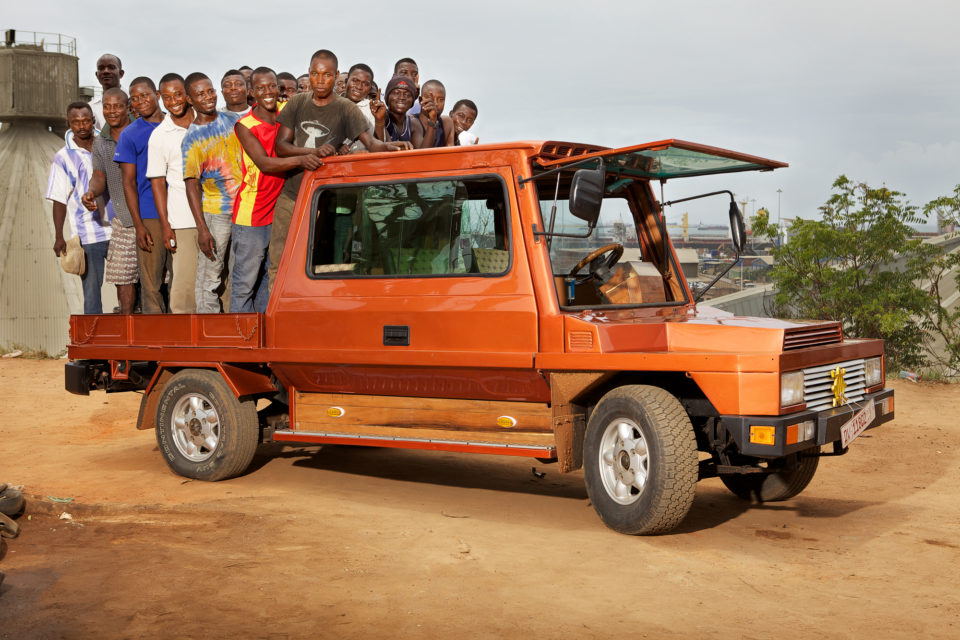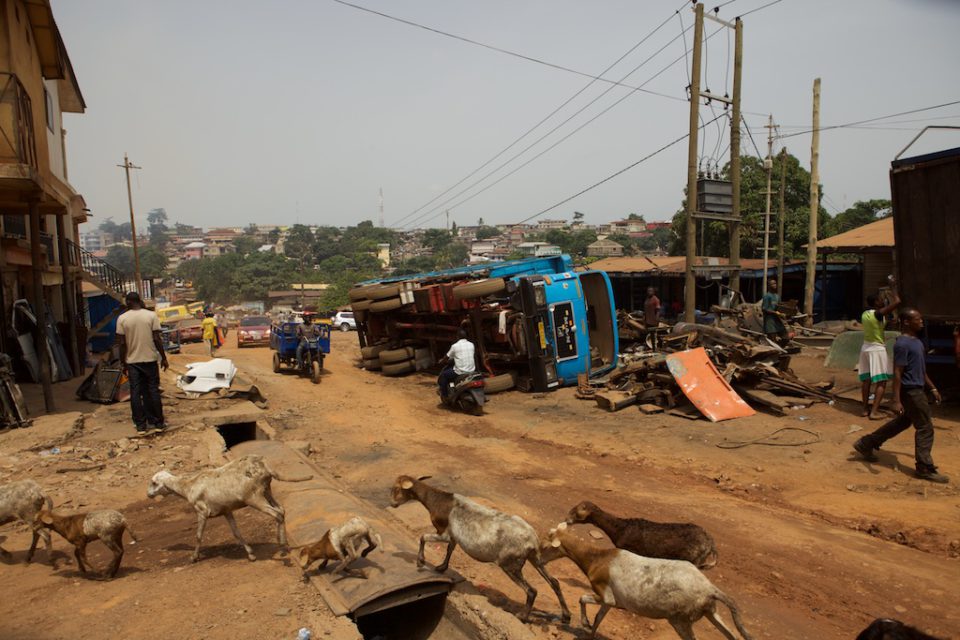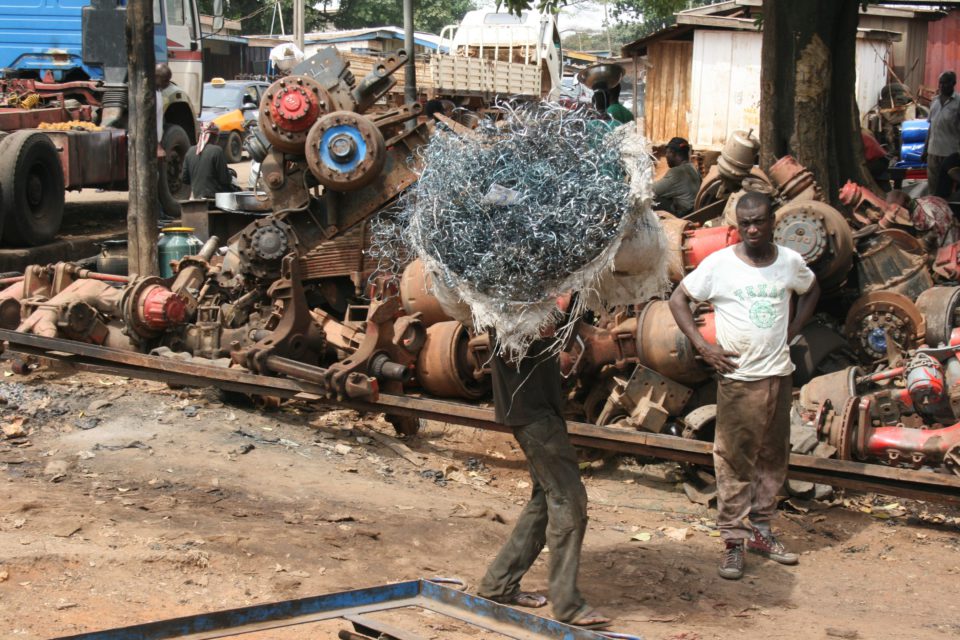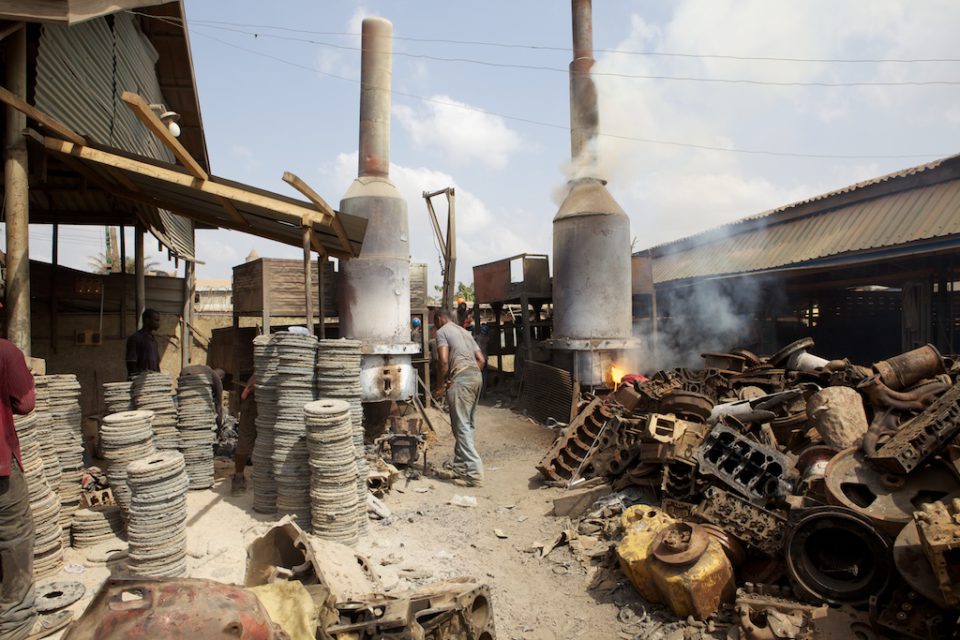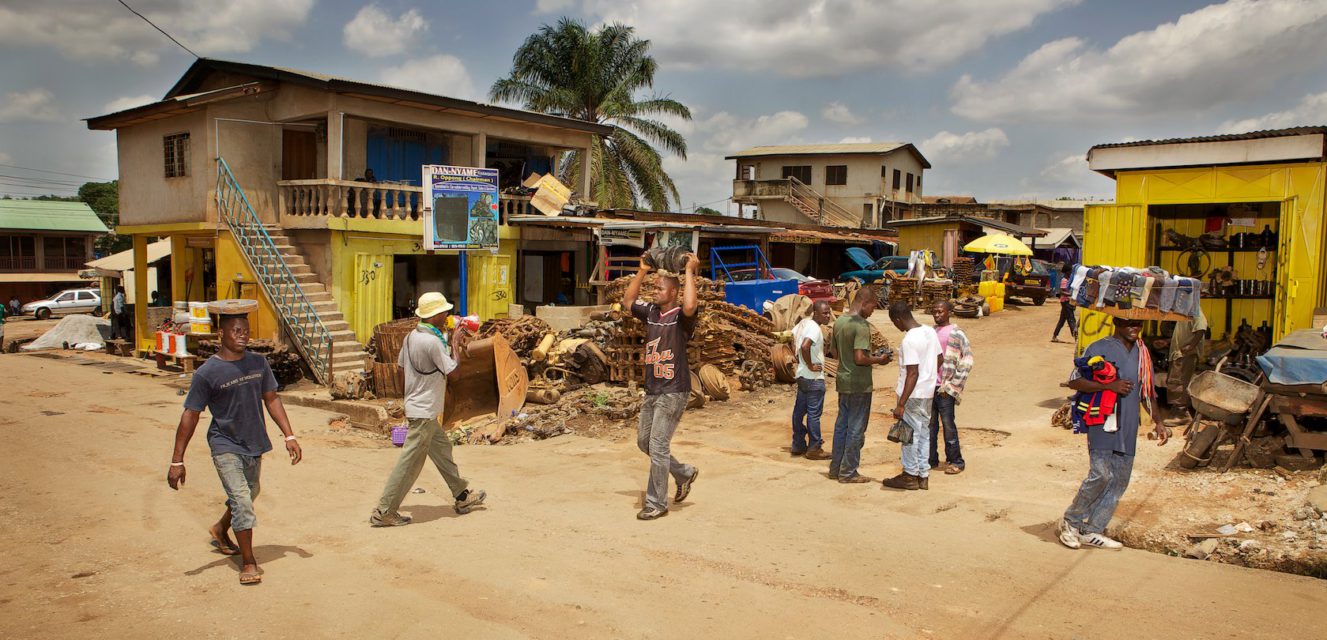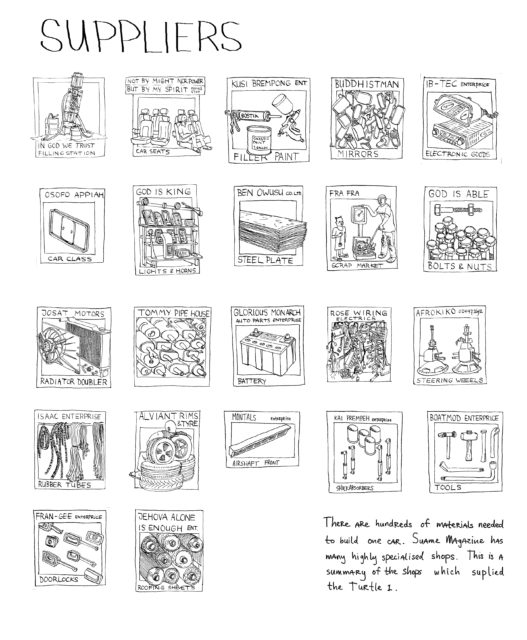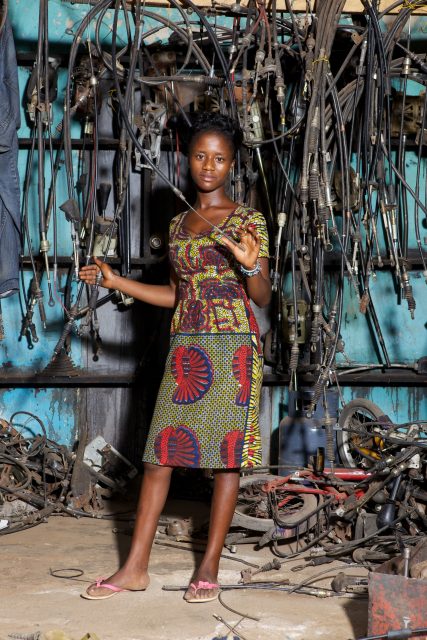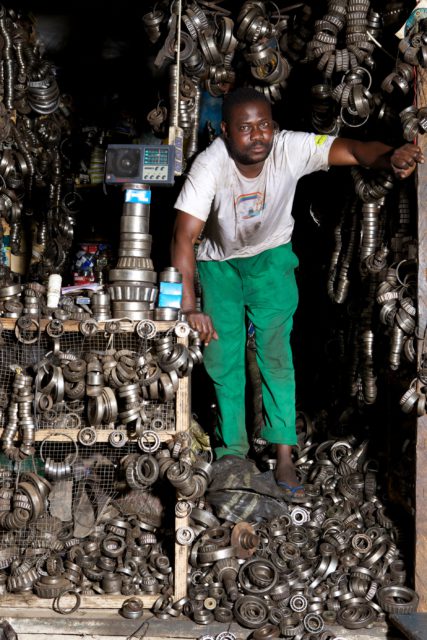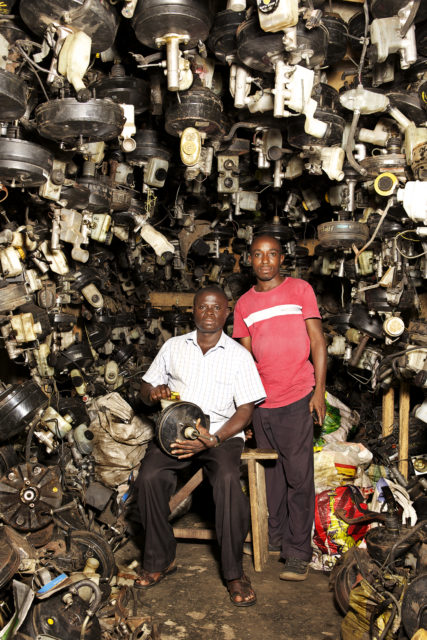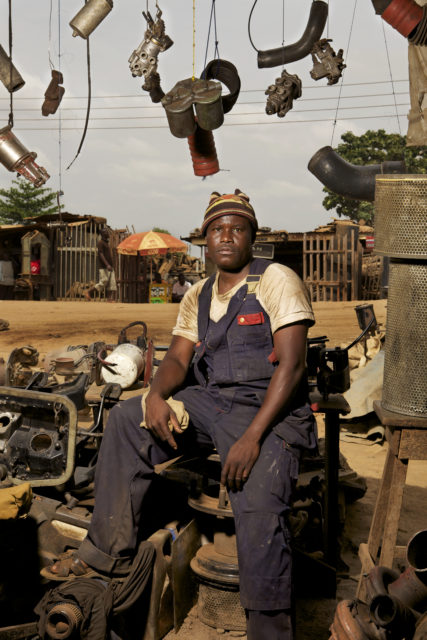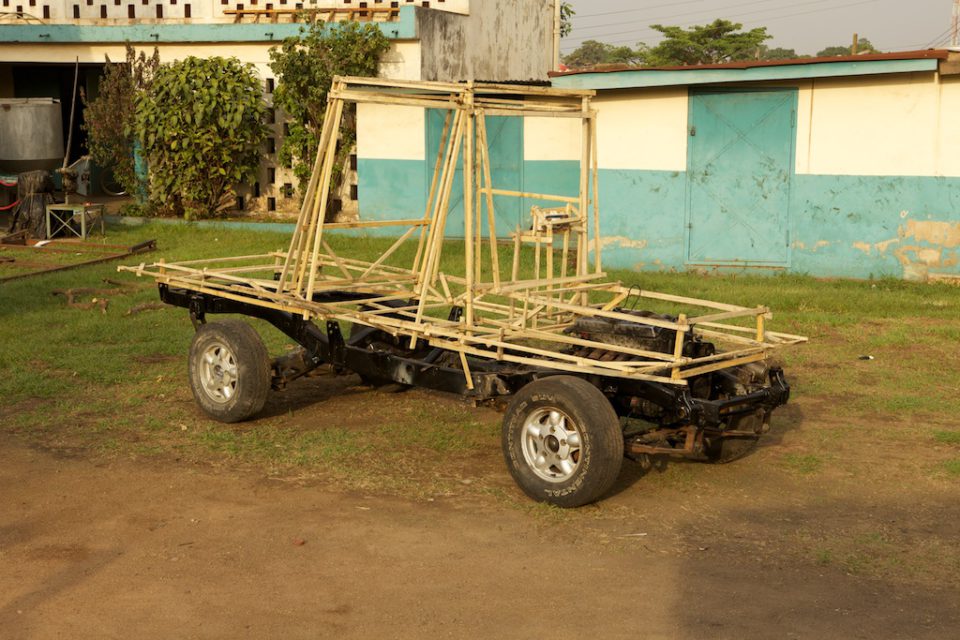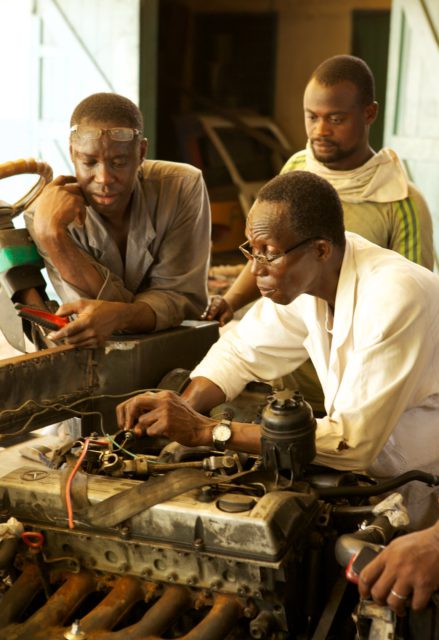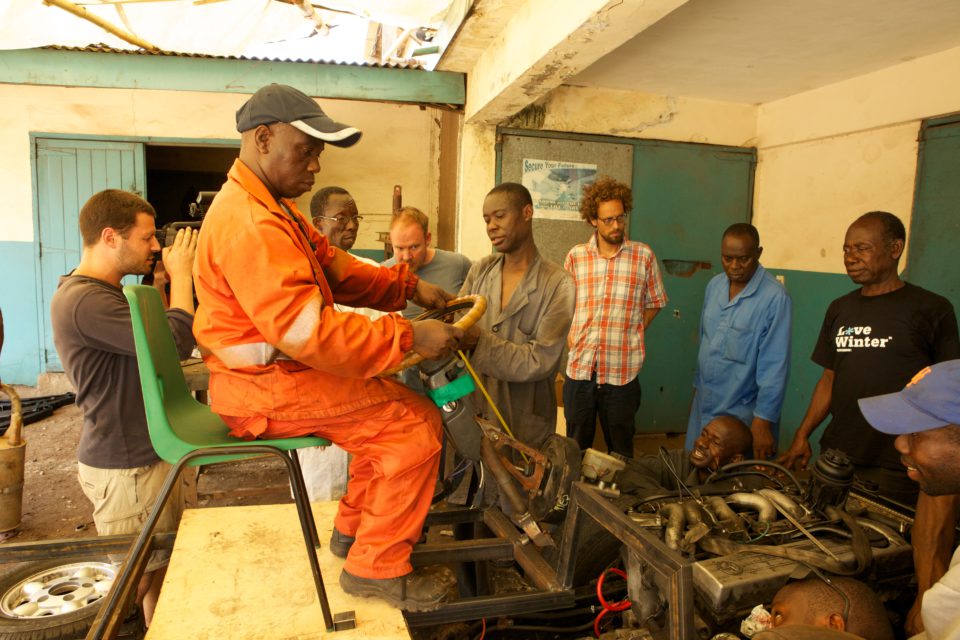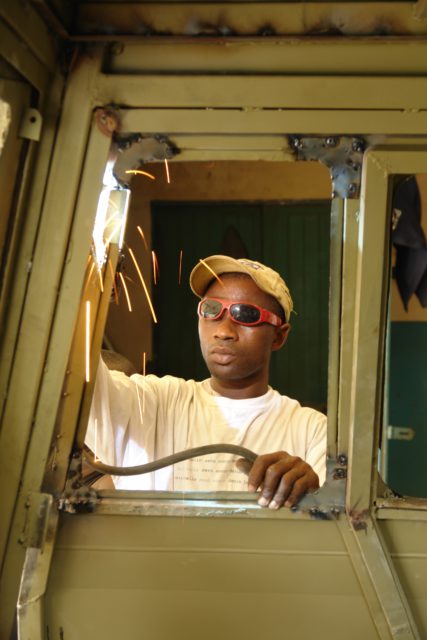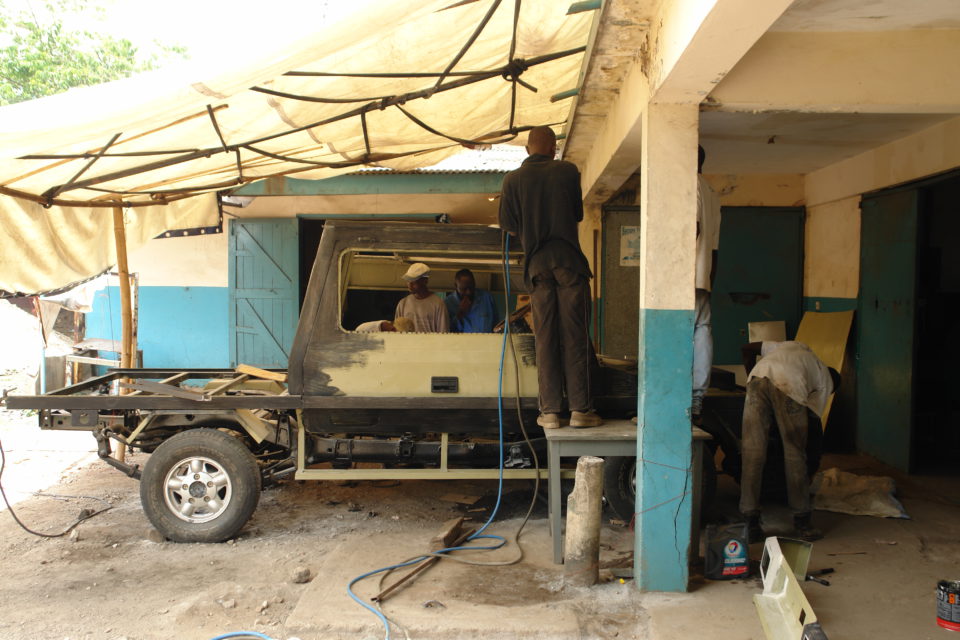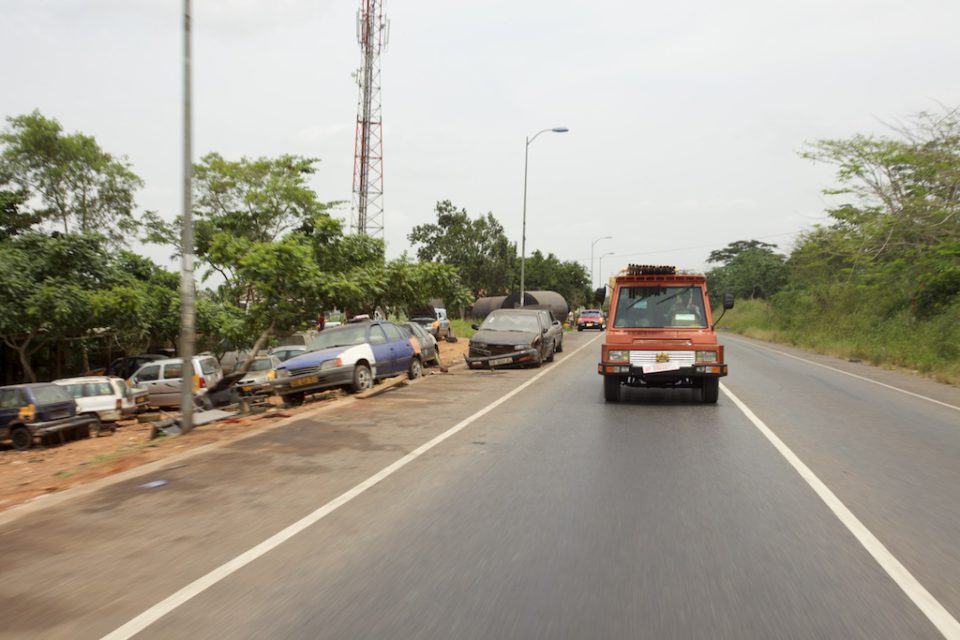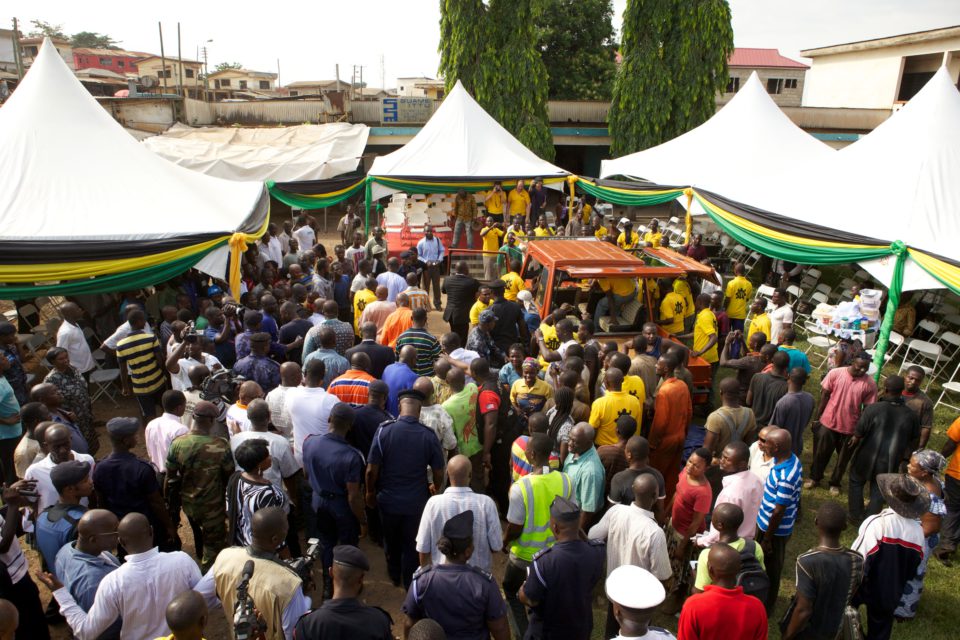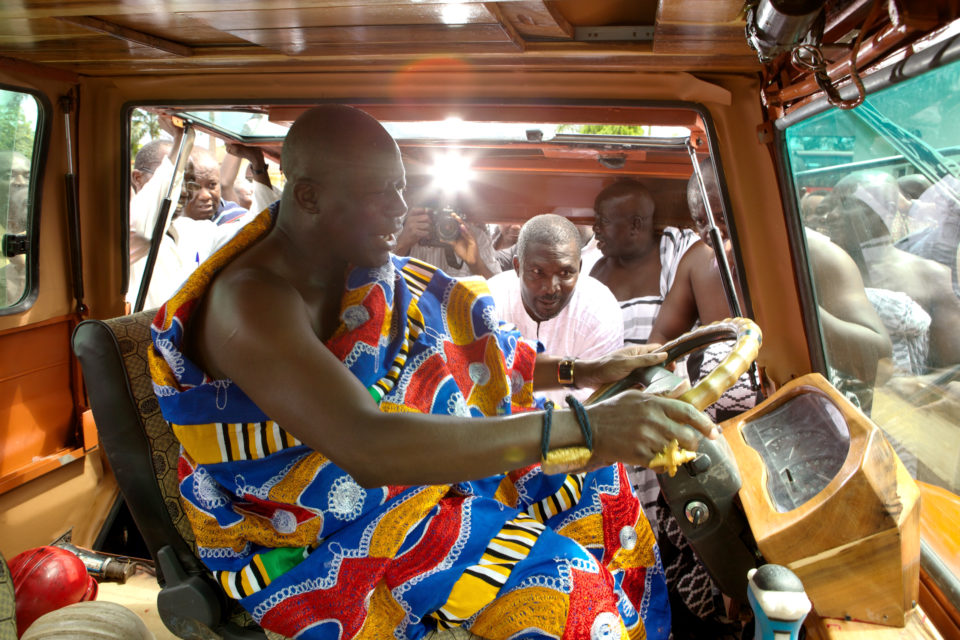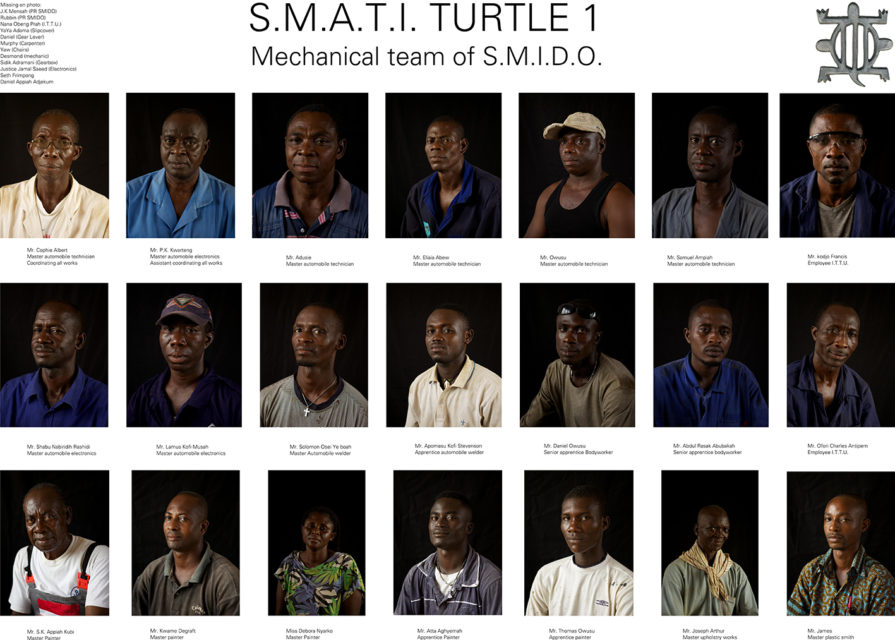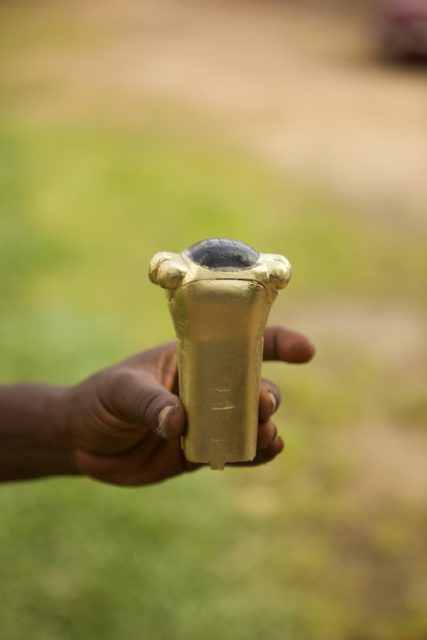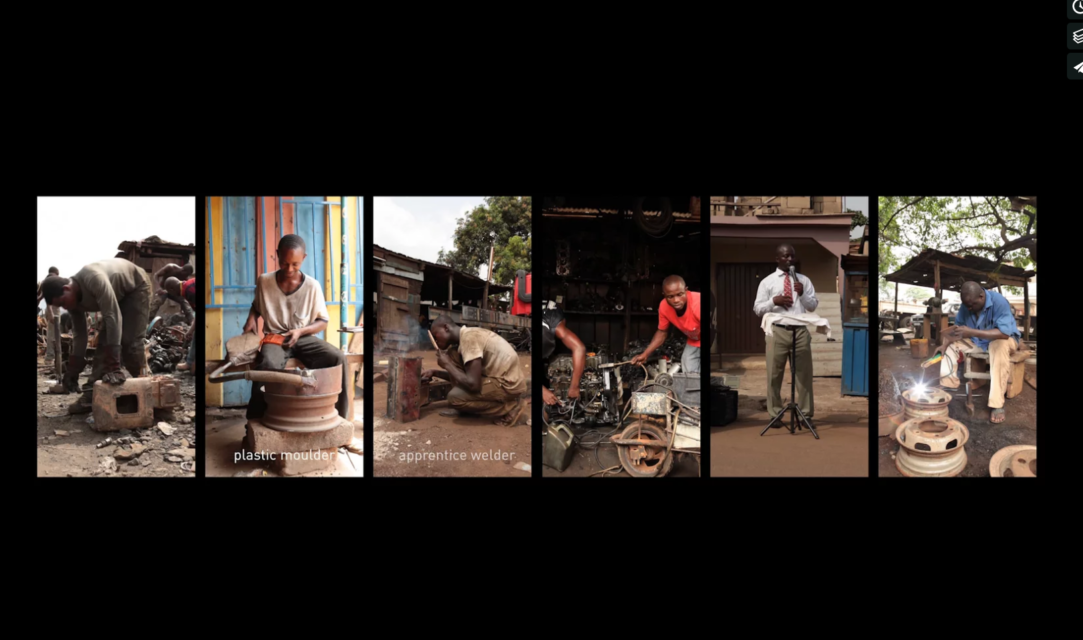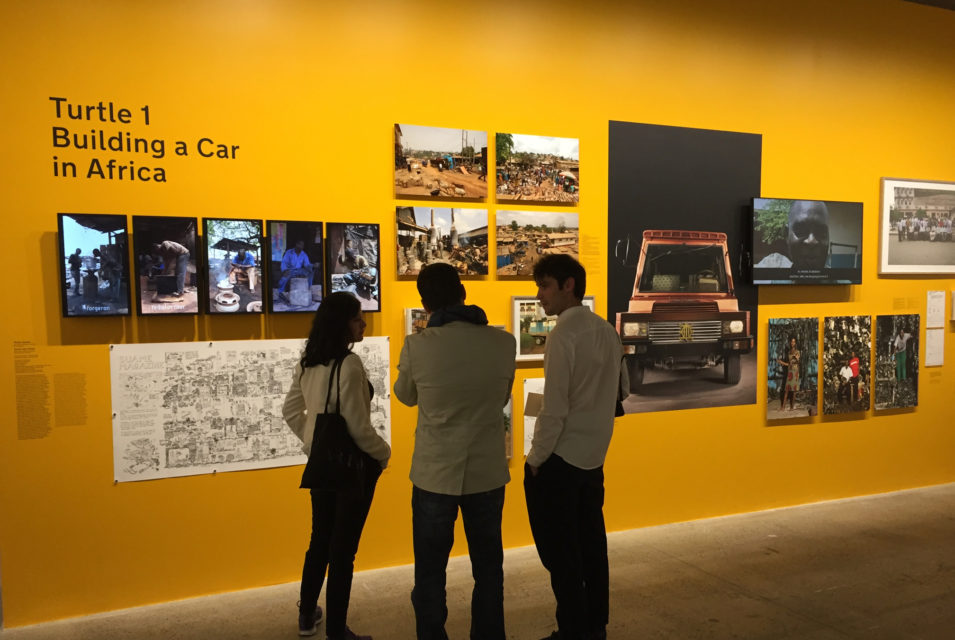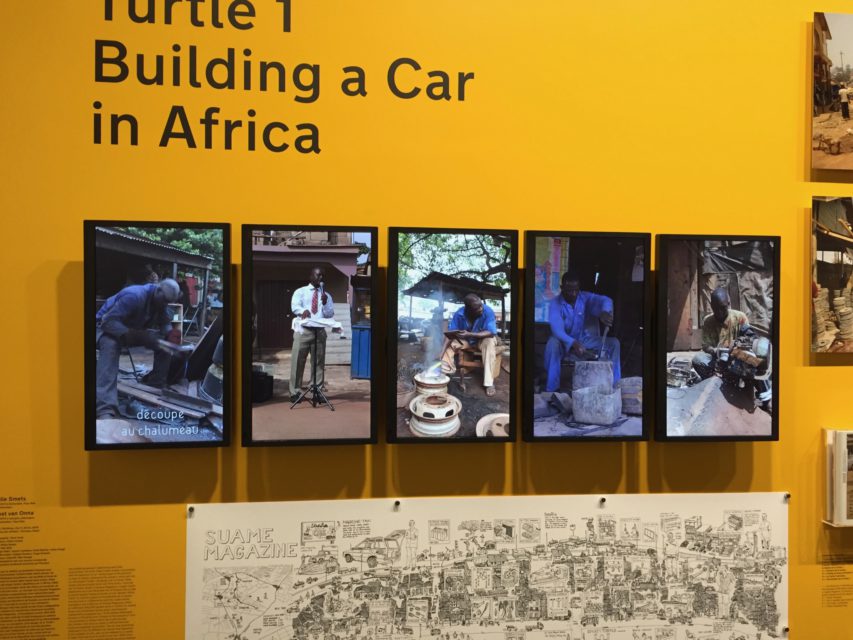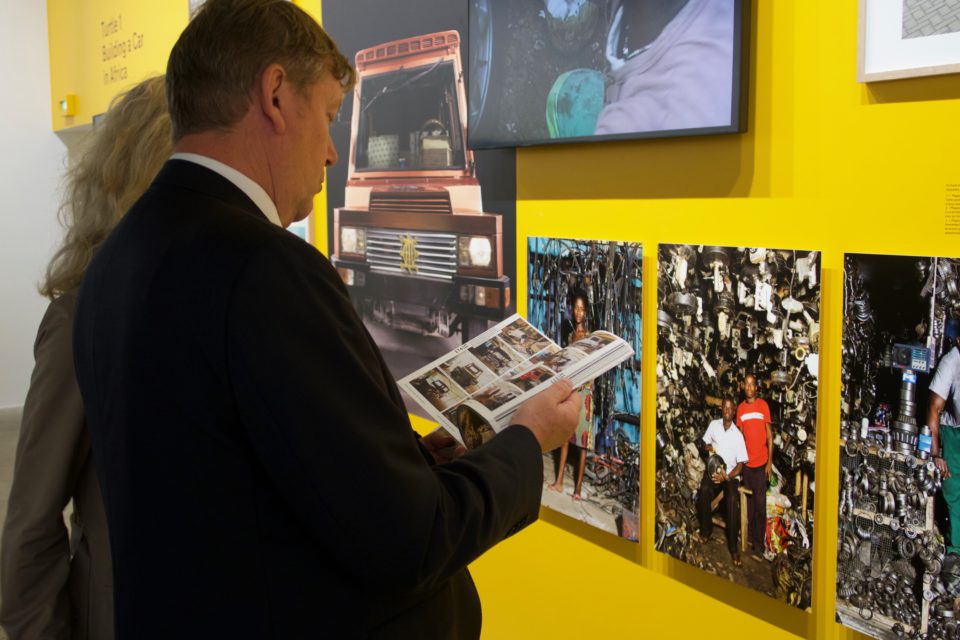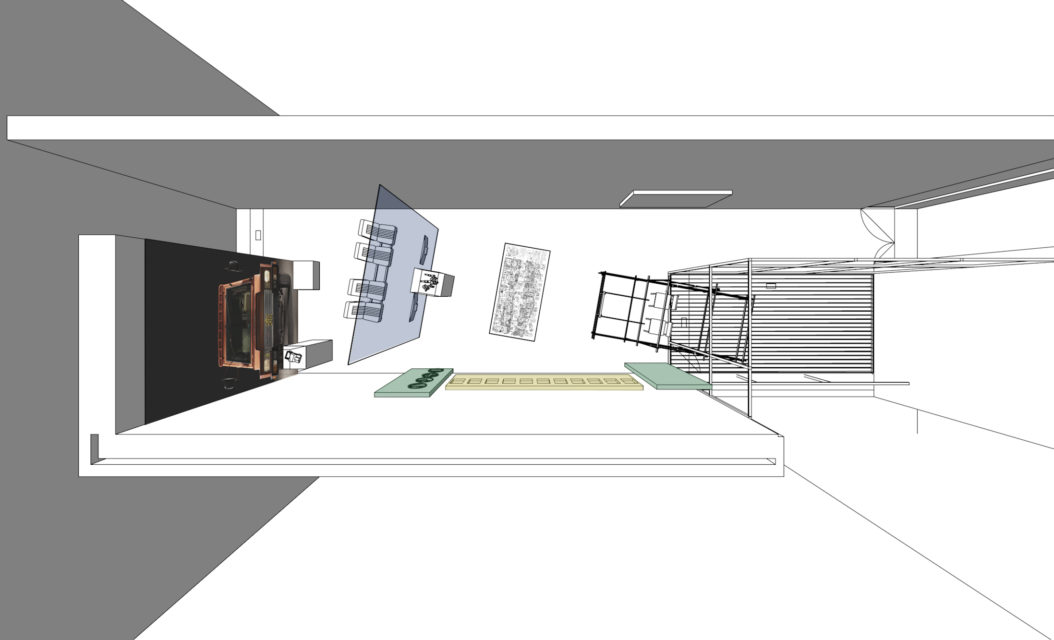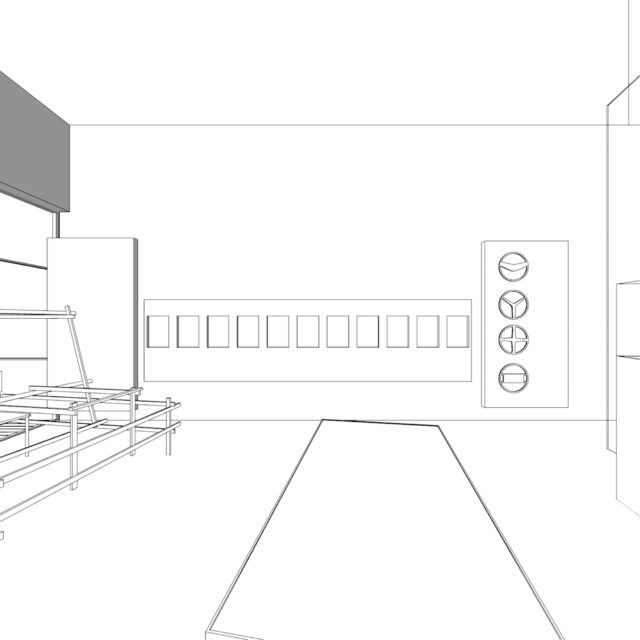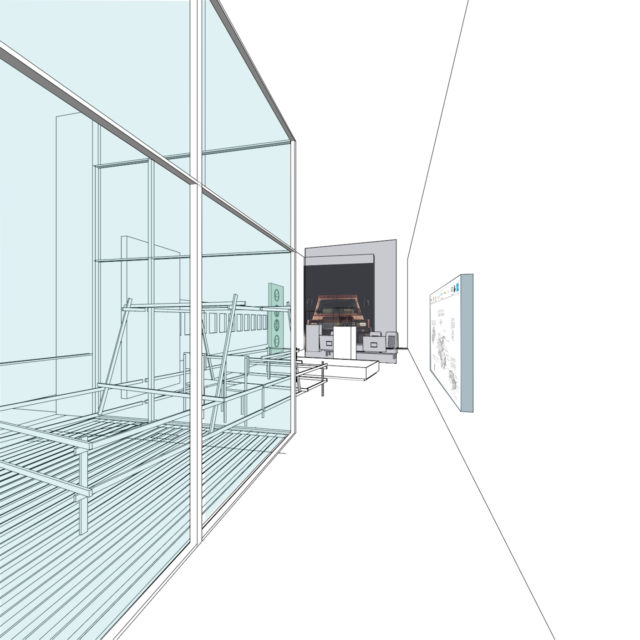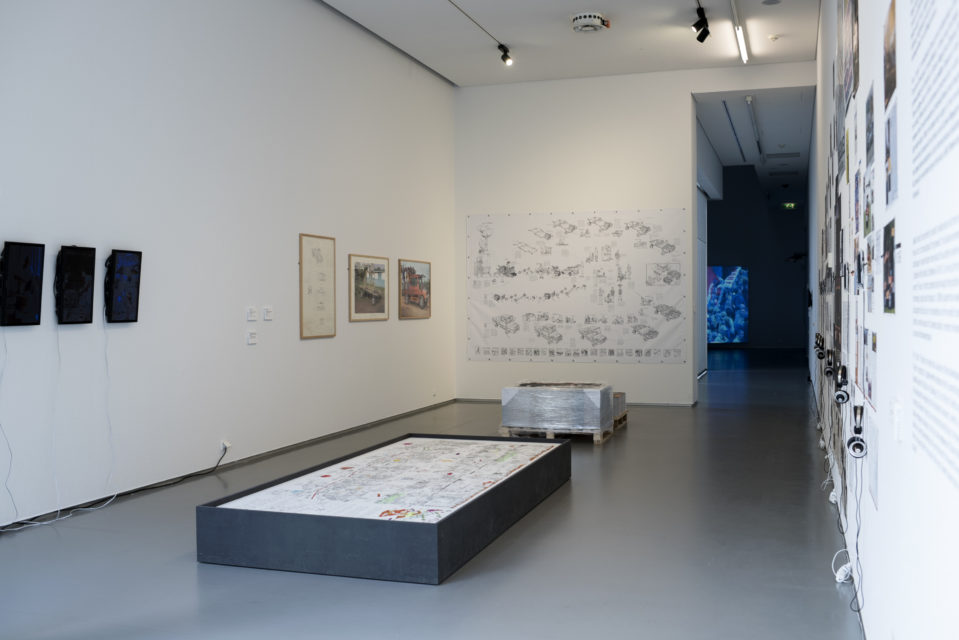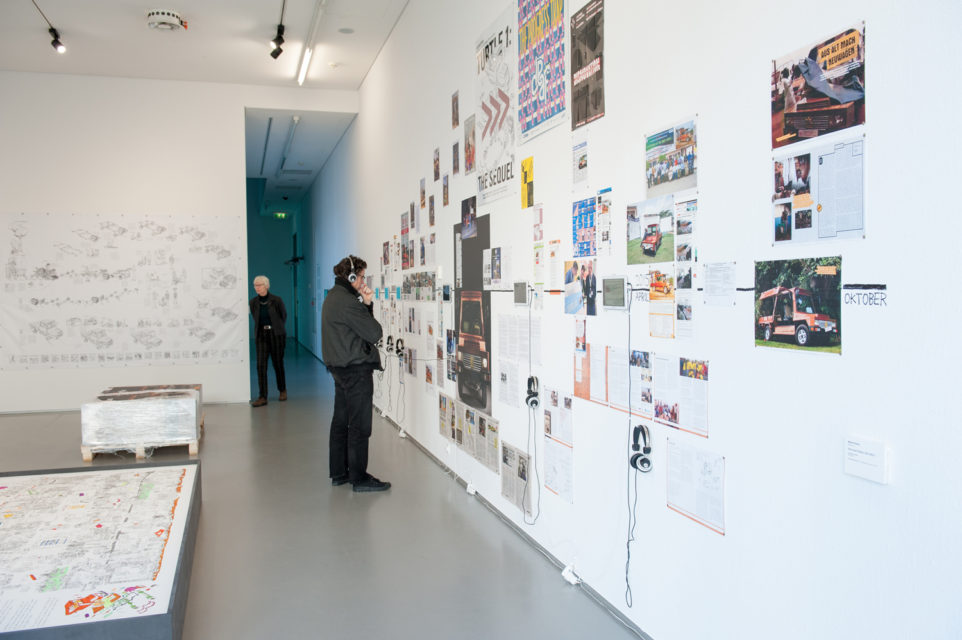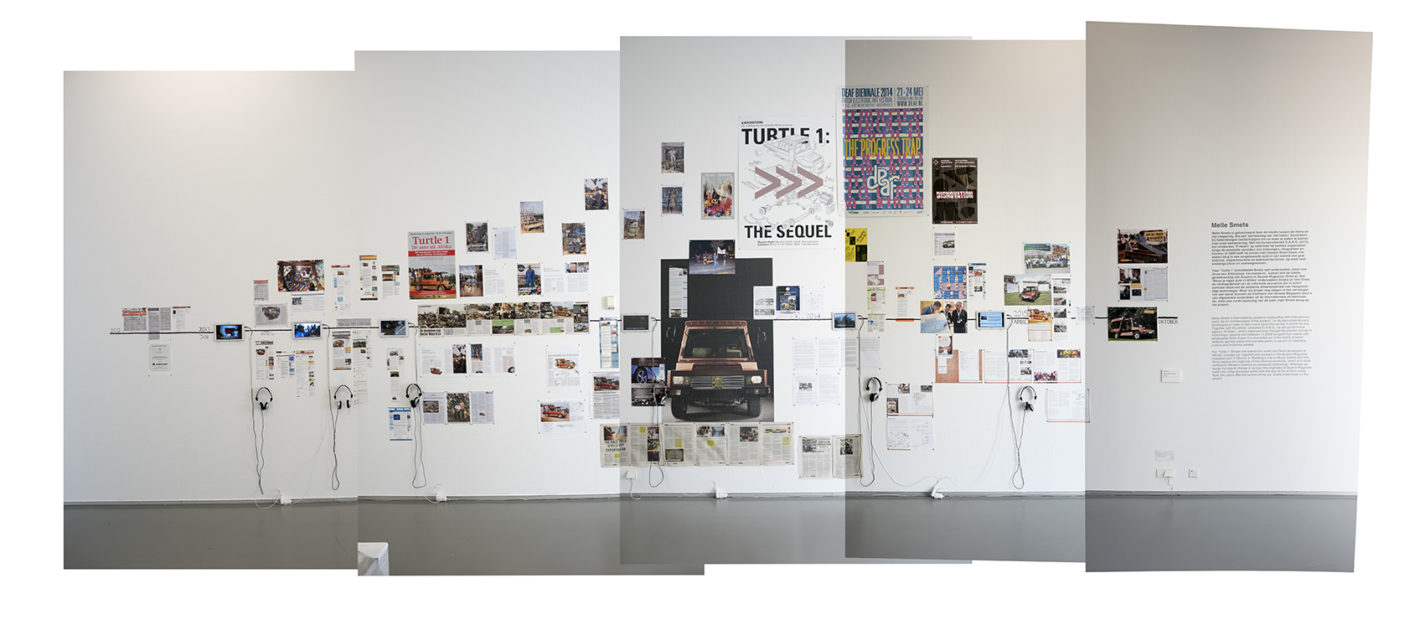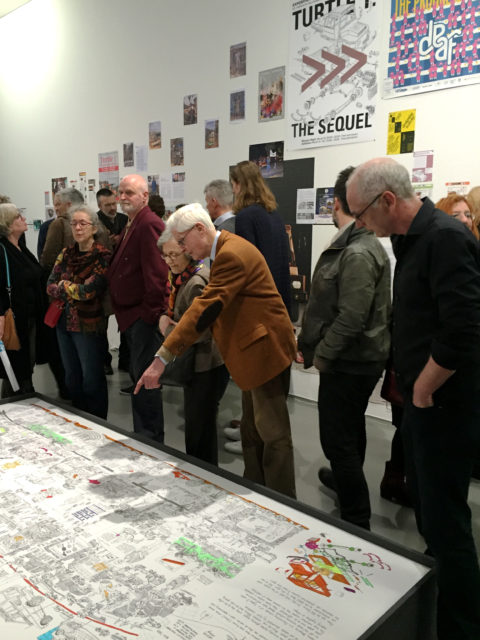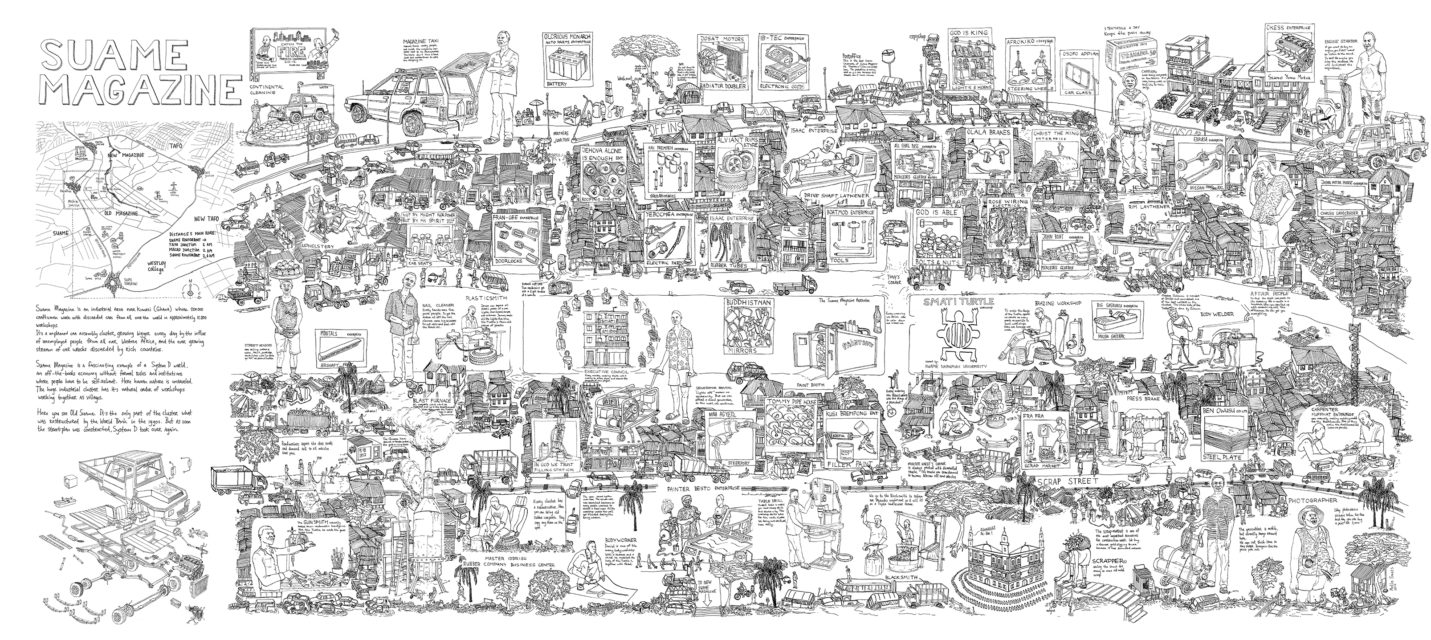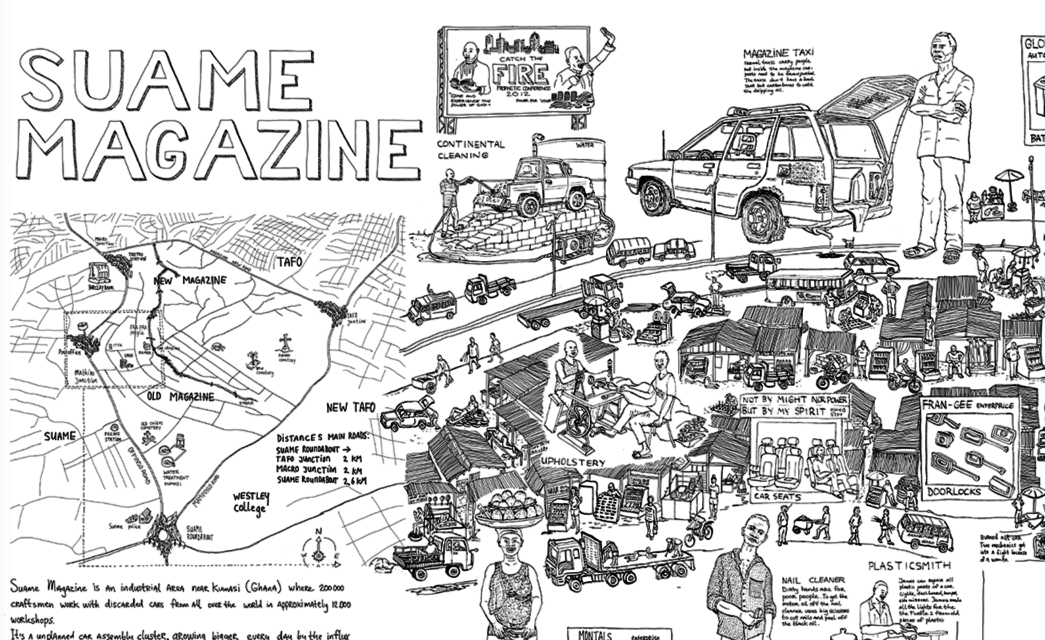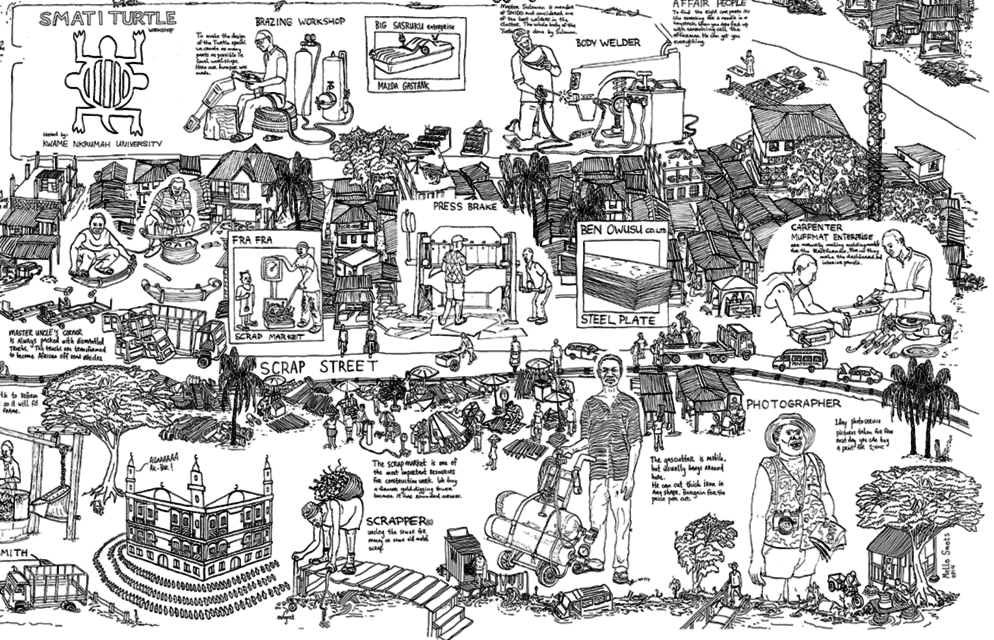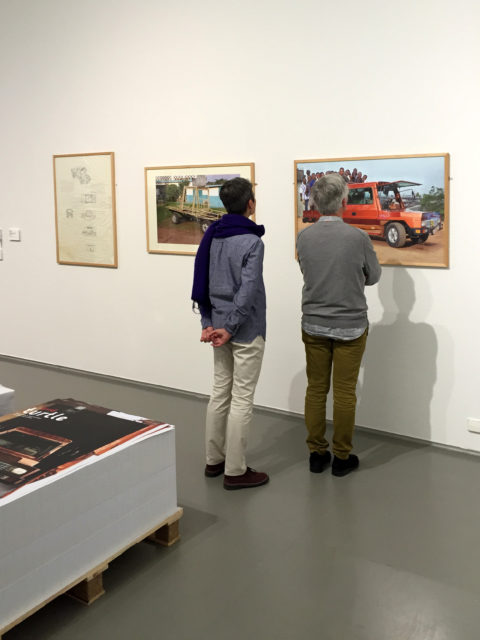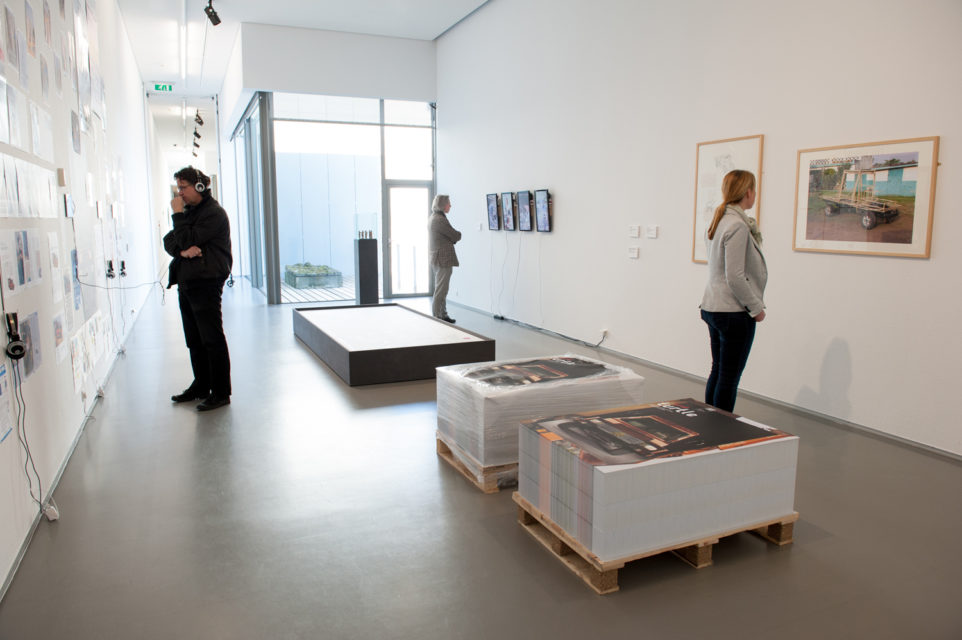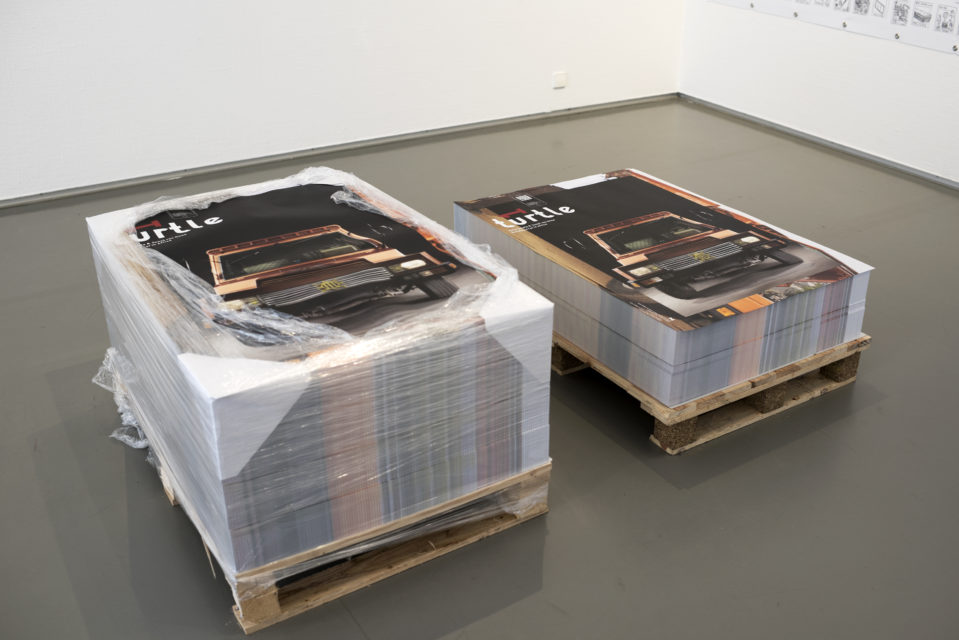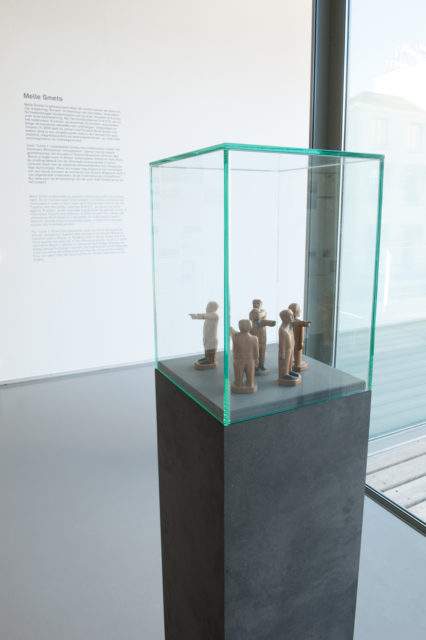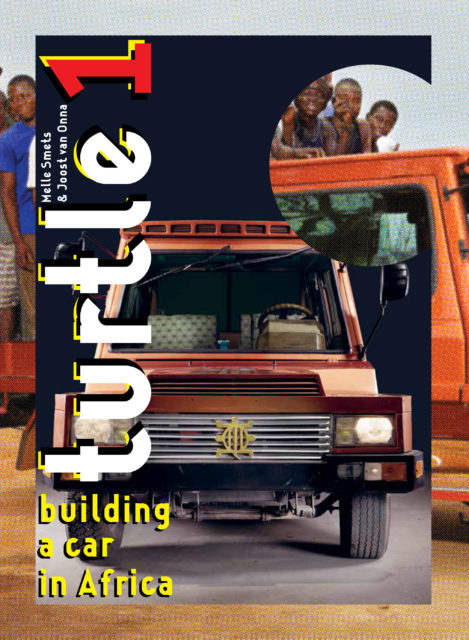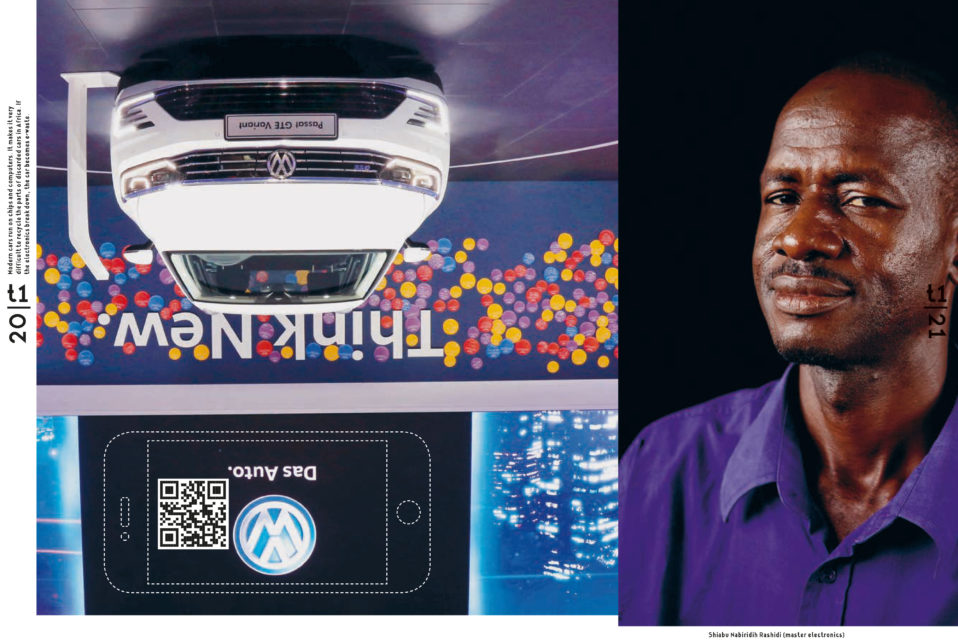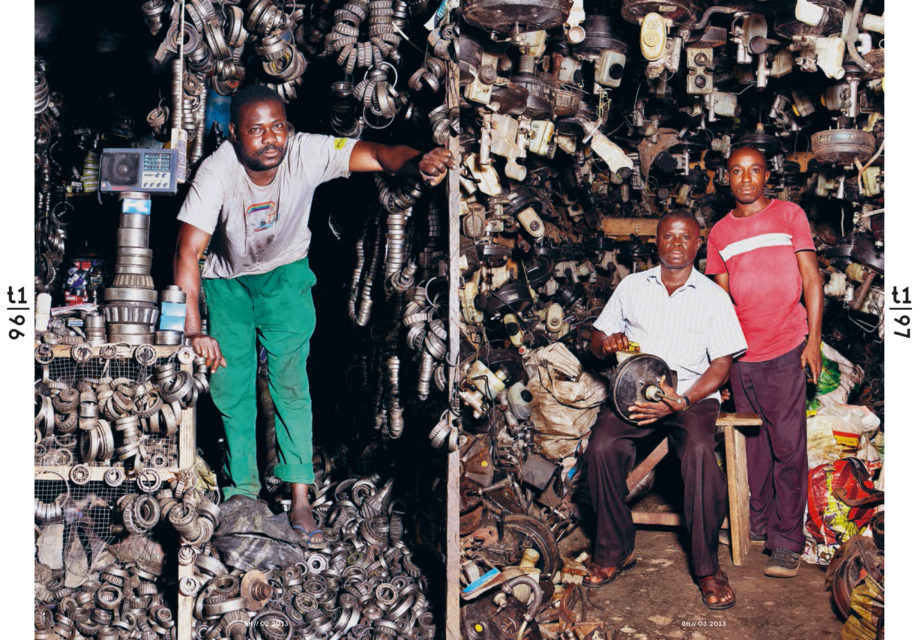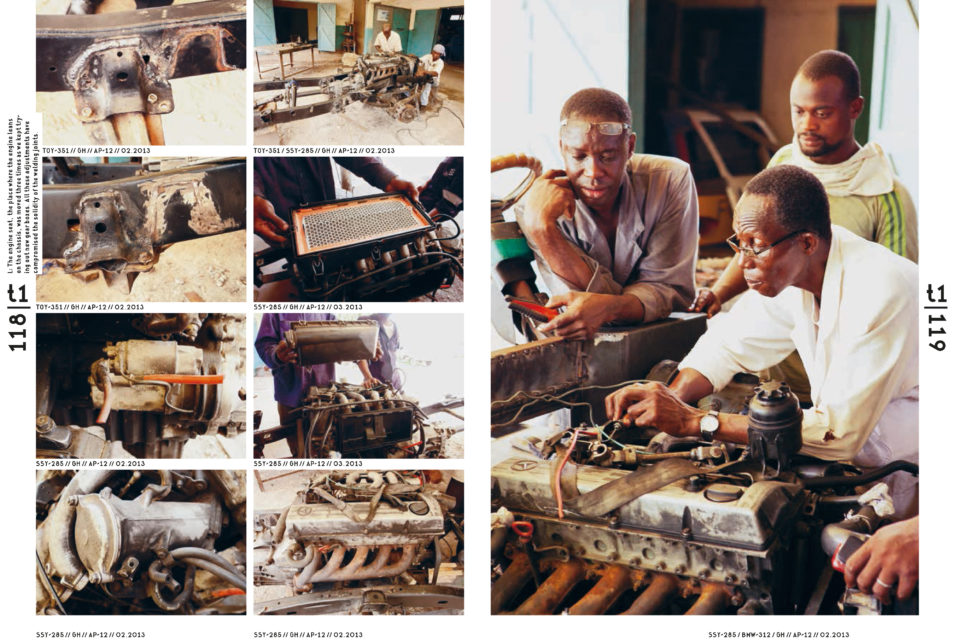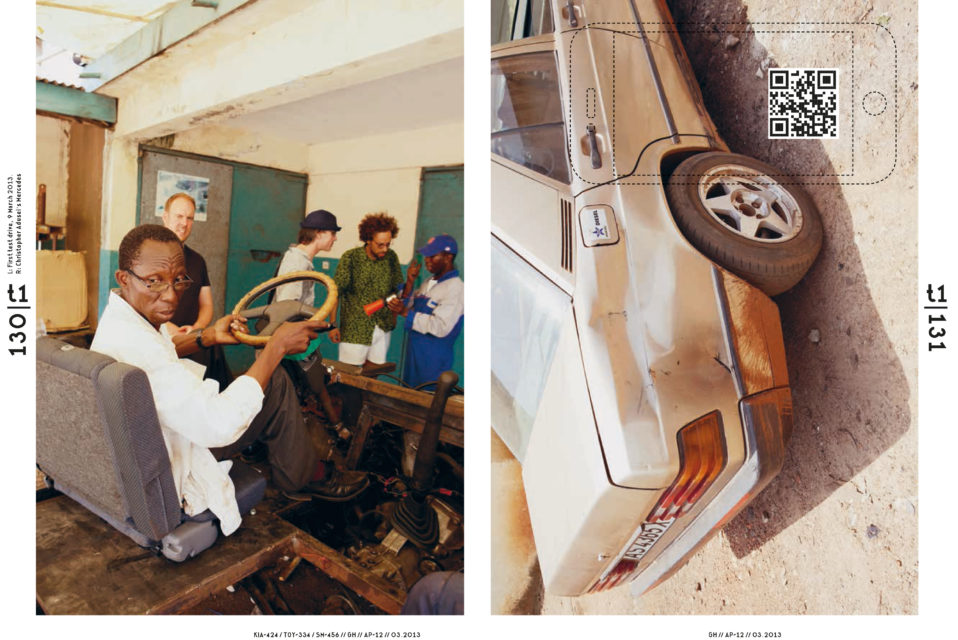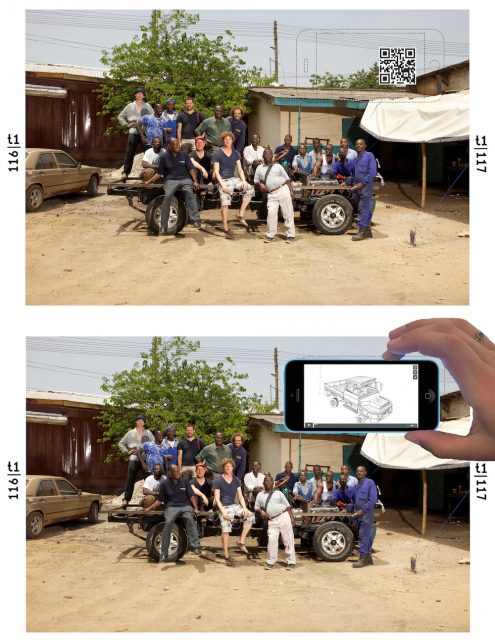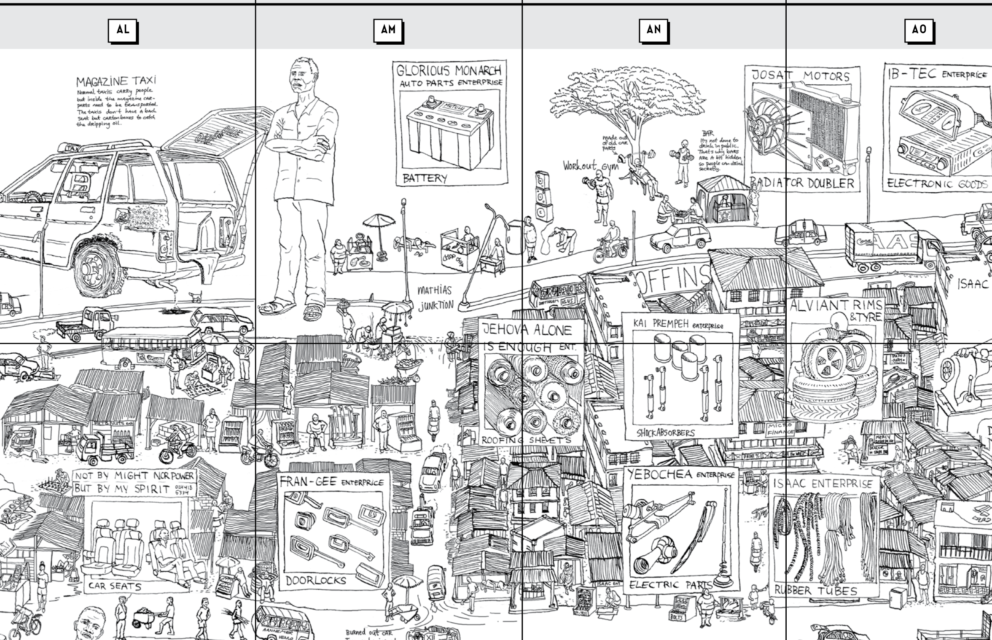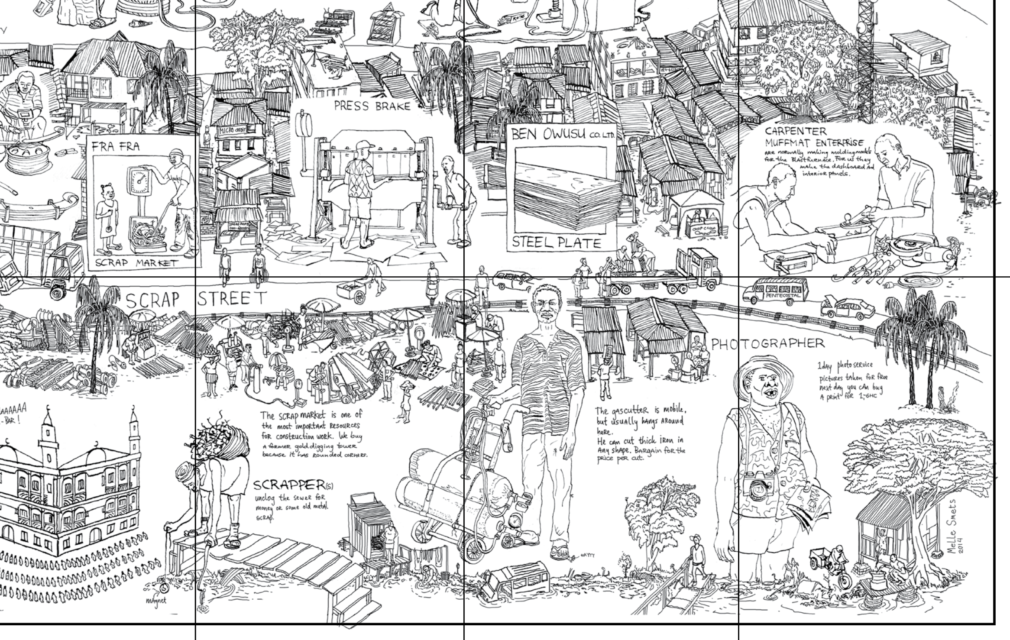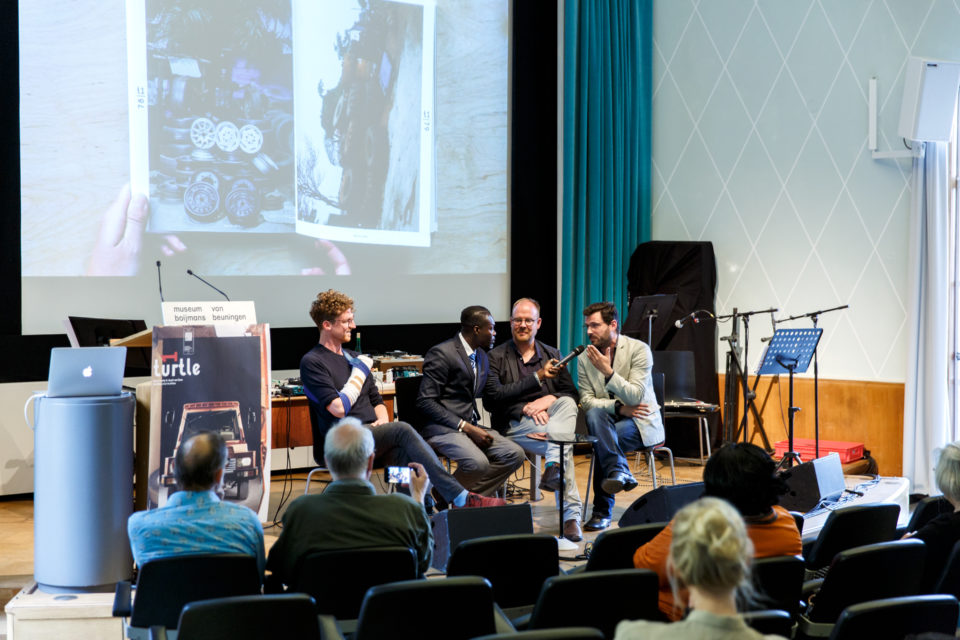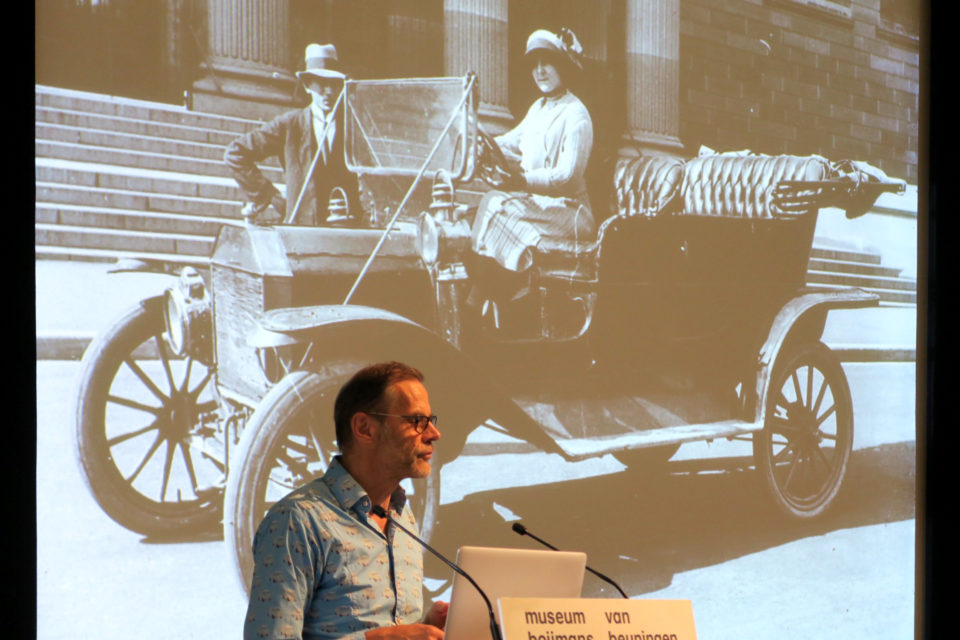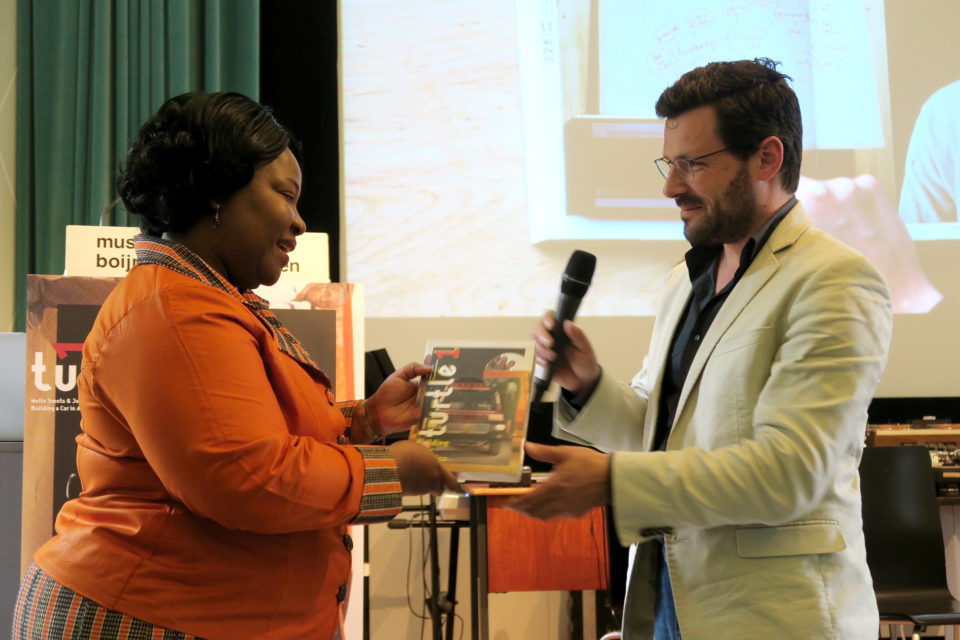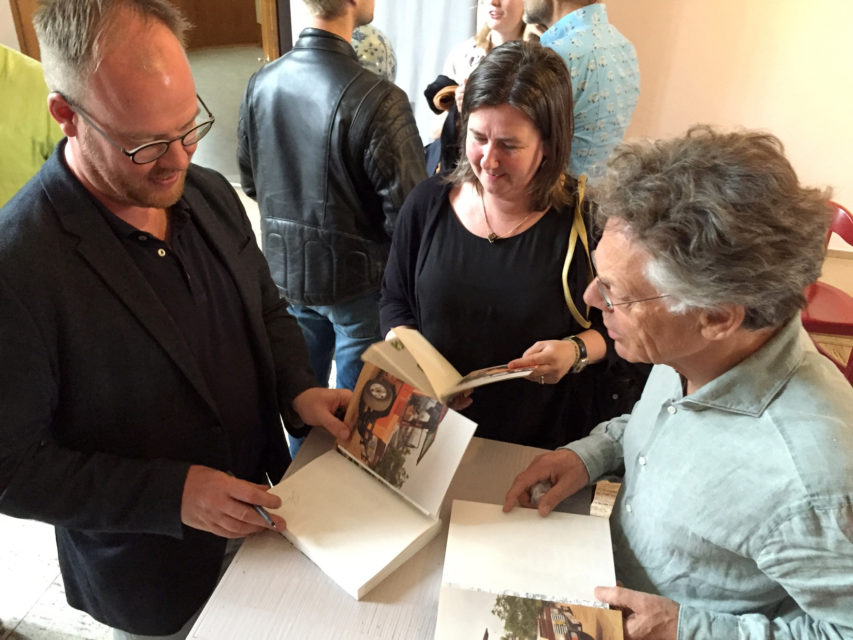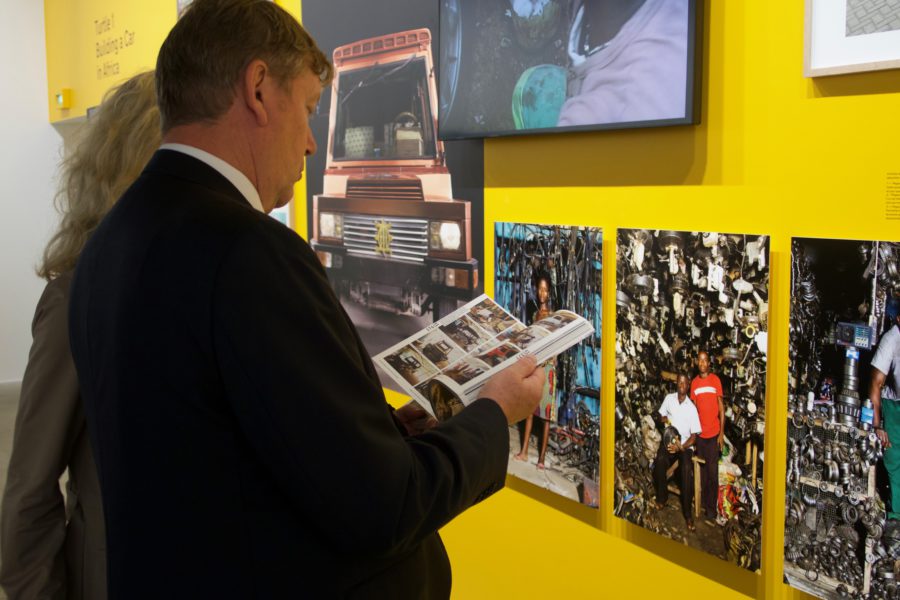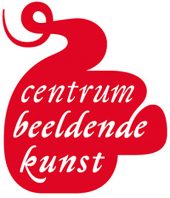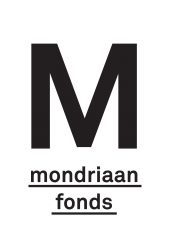The car once was a symbol of freedom. Auto makers still want us to believe in that dream. In reality we are addicted to systems that have locked us out completely: we do not even know how to change a tyre anymore.
And yet, the majority of the world lives in a Do-It-Yourself environment. Artist Melle Smets and sociologist Joost van Onna travelled to Suame Magazine (Ghana) to learn how an informal economy works. They collaborated with some of the ca 200,000 artisans and 12,000 workshops there to build a truly African car in only 12 weeks. The design grew out of analysis of the local circumstances, as well as the accessible infrastructure. The concept was based on flexibility: the car was constructed with parts from different brands that happened to be available.
Turtle 1 became the first Ghanaian car to be exported to the West. It toured motor shows, where it flanked the fully electric Tesla S. Early 2015 Turtle 1 returned home. Yet, expectations turned out to have diversified: whereas the initiators opted for a low-tech small Turtle 2 production line, the Ghanaian partners started negotiating for a large robotised manufacturing plant. We never stop to learn from one another…
Exhibition
Turtle 1 – building a car in Africa could be seen as a preview exhibition at Museum Boijmans van Beuningen, where the project was shown for 6 months as part of the group manifestation Project Rotterdam. While the media had extensively covered the building process, the full story with its final conclusions has never been shown before. The dream between the initiators and local partners in Suame Magazine has come to an end, yet what did we learn? Which lessons can we use in the future? Is it possible to produce informal car factories alike? What are the pitfalls?
From 20 April until 30 October Turtle 1 will be on show again. The first African car made from scratch is part of the group show AutoPhoto at Fondation Cartier (Paris) from 20 April – 31 October, an exhibition dedicated to photography’s relationship to the automobile. The story of the Turtle is translated to a dense presentation, including photos of the shopmakers and videos of the challenging construction.
Paradox is currently preparing a larger travelling exhibition. The hosting venues will be transformed into the Turtle Lab: a research institute, educational centre, production space and showroom all-in-one! Here, the customer stands on the front line: he can chose his car by being in direct contact with the building team who assemble and design the vehicle in merely a few weeks. Where large car manufacturers hide their trade secrets and keep all brainstorm sessions behind closed doors, the visitors of the Turtle Lab will receive insight into the functioning of a large, informal factory. They learn about the origins of the first prototype and, at the same time, become part of the growing network that can make use of the research made by Smets and Van Onna, as there are numerous industrial clusters to which their concept could be applied.
Book
Five years after Smets and Van Onna set foot on Ghanaian soil, it is time to reflect on what has been achieved. The book Turtle 1 – building a car in Africa takes the reader on an fascinating journey through the authors’ experiences as naïve outsiders – with no know- ledge of cars – who wanted to find out how an informal economy works.
Designed by Ko Sliggers – known for his award-winning cookbook about Sicilian cuisine Koken Tussen Vulkanen, the book is from start to finish filled with humorous and insightful images and video’s. Warna Oosterbaan, author of various titles such as Motorziel: kleine sociologie van een machine (2010) leaves no question unanswered in his thoughtful interview.
To fully understand the functioning of the Suame Magazine, a hand drawn map by Melle Smets is part of the book. The pull out drawing can be found at the back of the publication. Unique for a book is the inclusion of videos that can be called up on numerous pages by scanning the QR codes.
Turtle 1 is published by Paradox and Verlag Kettler.
Buy-
Book launch Turtle 1
18 June, Museum Boijmans Van Beuningen
23 June 2016The majority of the world lives in a do-it-yourself environment. Intrigued by the functioning of these communal spaces, artist Melle Smets and sociologist Joost van Onna travelled to Suame Magazine (Ghana) where cars are disassembled and their parts traded. They collaborated with local artisans and organisations to create a truly African car in only 12...
Read more -
Nous souhaiterions vous rencontrer à Arles!
Programme Paradox at Arles
6 July 2016From July 4 until July 10 the opening of Les Rencontres d’Arles takes place, with international photography events in parts of the city. Paradox is at Arles to present the latest publications and projects. We’d love to meet you there!
Read more -
Return of the Turtle
First Ghanaian car part of the group show AutoPhoto at Fondation Cartier
10 March 2017After several wanderings, Turtle 1 will be on show again. The first African car made from scratch is part of the group show AutoPhoto at Fondation Cartier (Paris) from 20 April – 31 October, an exhibition dedicated to photography’s relationship to the automobile. The story of the Turtle is translated to a dense presentation, including photos of the...
Read more -
25% Discount on selected photo books
10 December 2018Seasons greetings, photobook lovers! In 2019/2020, Paradox celebrates 25 years of documentary projects. Founded in 1993, our first four productions became visible in 1995. Starting with a film projection in the streets of Amsterdam, The Neighbor Next Door, by Shimon Attie, Paradox went on to produce extensive documentary projects. Remember Ad van Denderen’s early look...
Read more
-
Read more »Turtle 1 in Dutch television show Pauw & Witteman
-
Read more »Vakmanschap uit Ghana
-
Read more »Cars and photography, a parallel history
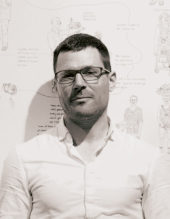 Melle Smets (1975) is active as a researcher, artist and critic, and is specialized in issues related to public space. Smets visualizes traces from the past and present to explore the relationship between man and his environment. He works as a consultant, lecturer and speaker at universities in the Netherlands. His aim is to create a broad public awareness to reflect on the contemporary landscape. After finishing a study Art and Public Space (OK 5) at the art academy in Arnhem in 1999, he co-founded the artists collective GANG. The group organized city dwelling tours, exhibitions for airports, harbours and highways. In 2005 he moved to Rotterdam where he set up shop. He founded a Dutch Highway museum, wrote a book about his experiences living in a car for 30 days and participated in a number of landart projects.
Melle Smets (1975) is active as a researcher, artist and critic, and is specialized in issues related to public space. Smets visualizes traces from the past and present to explore the relationship between man and his environment. He works as a consultant, lecturer and speaker at universities in the Netherlands. His aim is to create a broad public awareness to reflect on the contemporary landscape. After finishing a study Art and Public Space (OK 5) at the art academy in Arnhem in 1999, he co-founded the artists collective GANG. The group organized city dwelling tours, exhibitions for airports, harbours and highways. In 2005 he moved to Rotterdam where he set up shop. He founded a Dutch Highway museum, wrote a book about his experiences living in a car for 30 days and participated in a number of landart projects.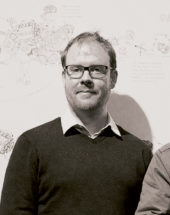 Joost van Onna (b. 1976) studied social psychology and criminology. He is currently working on his PhD thesis (at the VU University of Amsterdam) about factors contributing to (non-)compliance to laws. Through his work, thesis and his long-term stay in South America, he is fascinated by the functioning and strength of informal self-regulating (economic) systems.
Joost van Onna (b. 1976) studied social psychology and criminology. He is currently working on his PhD thesis (at the VU University of Amsterdam) about factors contributing to (non-)compliance to laws. Through his work, thesis and his long-term stay in South America, he is fascinated by the functioning and strength of informal self-regulating (economic) systems. 